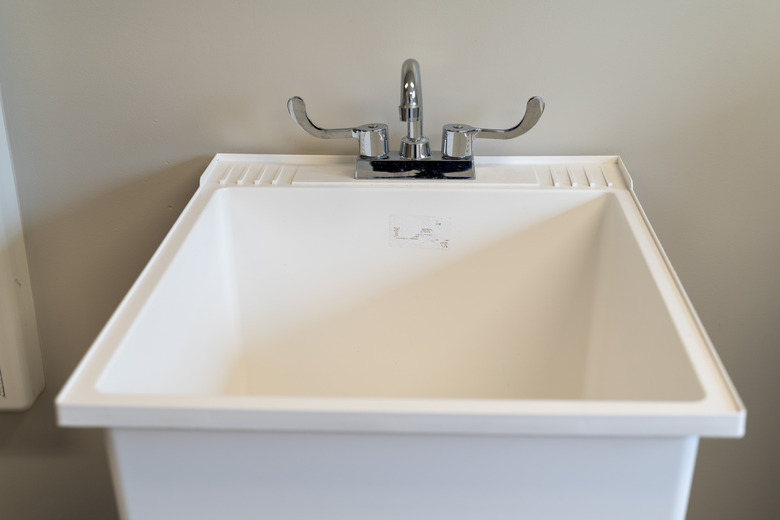How To Get Rid Of Stains In A Utility Sink
Most of today's utility sinks are made of plastic and are typically white or light colored. This means that they tend to stain easily, which is why it's important to know the best plastic sink cleaner. While utility sinks are durable, certain products can damage them. Comet is a very good cleaning product, but using it on a plastic sink is generally not recommended. Instead, you can use household products like vinegar as a good, safe laundry tub cleaner.
What Is a Utility Sink?
What Is a Utility Sink?
Utility sinks, also known as laundry sinks or laundry tubs, are wider and deeper than regular sinks. They can have a single- or two-bowl design and can be used for many purposes, including soaking laundry, rinsing muddy boots and clothing, cleaning tools and paintbrushes, and bathing pets. With so many different functions, it's easy to see how a utility sink might become stained and how important it is to find a good plastic sink cleaner.
Although plastic utility sinks are the most common type, they come in several other materials. In older homes you are likely to find utility sinks made of cast iron or even cement. These sinks are very heavy and durable, particularly concrete utility sinks, which rarely scratch. Utility sinks can also be manufactured from stainless steel and fiberglass. All of these materials can be cleaned with the same laundry tub cleaner, such as vinegar, baking soda or a combination of both.
How to Remove Stains
1. Spray With a Vinegar Mixture
Wipe the sink dry with a soft, clean cloth. Pour a mixture of 1 cup of water and 1/4 cup of white distilled vinegar into a spray bottle and spray the sink. You can spray just the stained area or you can spray and clean the entire sink. Allow the solution to sit for 10 to 15 minutes.
2. Scrub With a Soft Brush
Rub the sink areas you've sprayed with a damp cloth that's been dipped in warm water. If the stains do not come out with the cloth, spray the sink again, let it sit for a few minutes and then scrub gently using a soft-bristle scrub brush. Don't use an abrasive sponge or hard-bristled scrub brush because it can scratch the sink. If the stains are still proving difficult, sprinkle the area with baking soda, squirt it with your spray bottle and scrub it again with the soft brush.
3. Use Baking Soda
If the vinegar mixture is not taking care of a stain or buildup of soap scum, you can make a stronger laundry tub cleaner by mixing one part water, one part baking soda and one part white vinegar or lemon juice. This will form a paste that you can apply to the stained areas. Let it sit for about a half hour before scrubbing it with the soft-bristled brush.
4. Rinse the Utility Sink
Rinse the area with warm water or wipe with a damp rag. If the stains haven't been completely removed, repeat the process. Then fill the sink with hot, soapy water and let it sit for a half hour to finish off the cleaning process.
5. Other Plastic Sink Cleaner Solutions
For sinks with paint stains, spray it with WD-40 and then use a scraper or putty knife to remove the paint from the kitchen sink. Using Comet on a plastic sink can scratch and damage the sink, so only use it as a last resort. And remember to wipe your sink dry with a soft, clean cloth after every use to prevent stains from forming.
